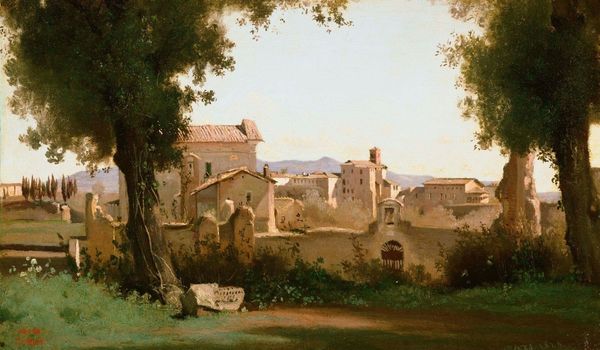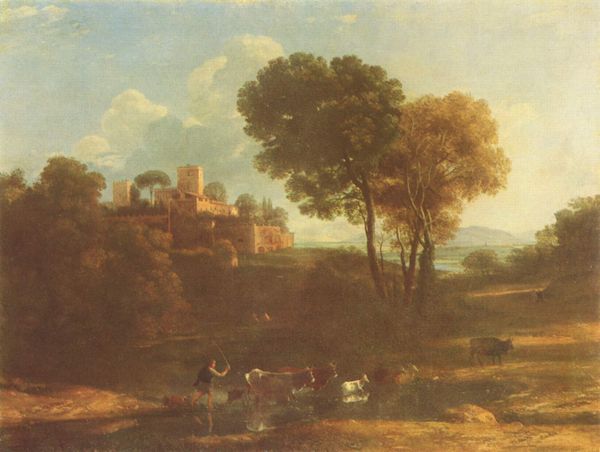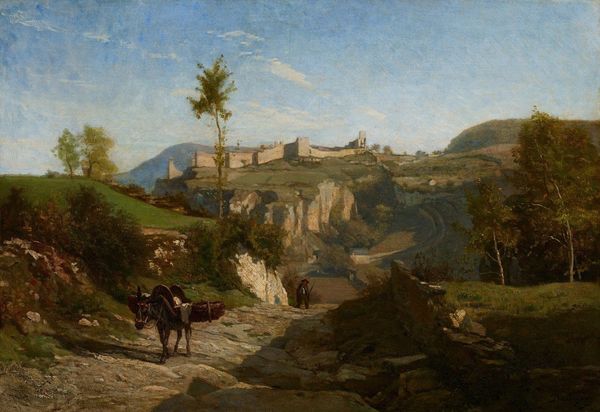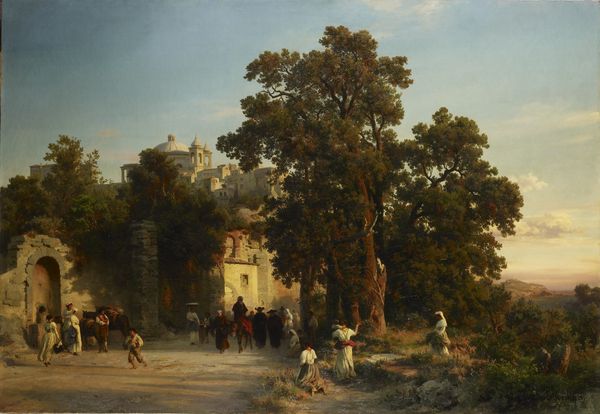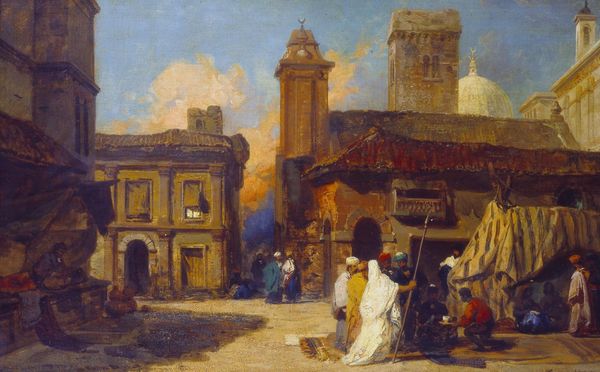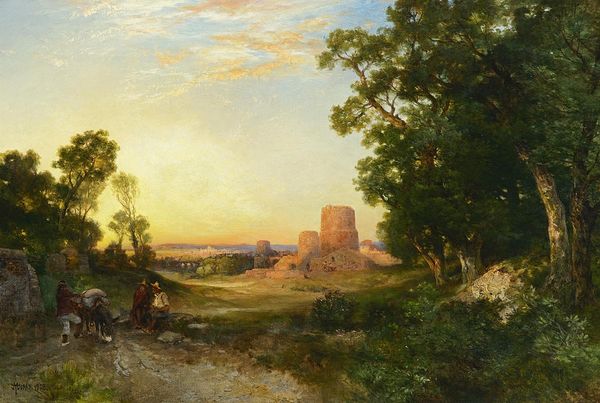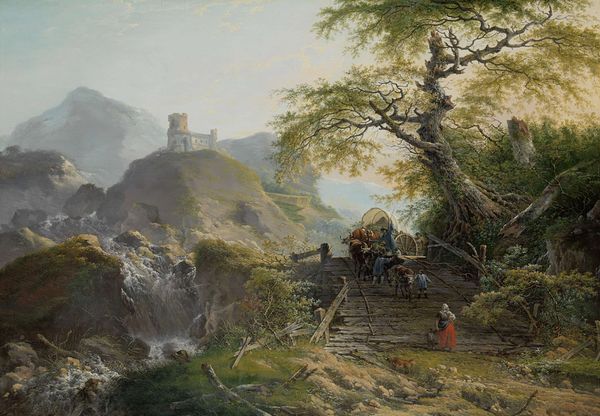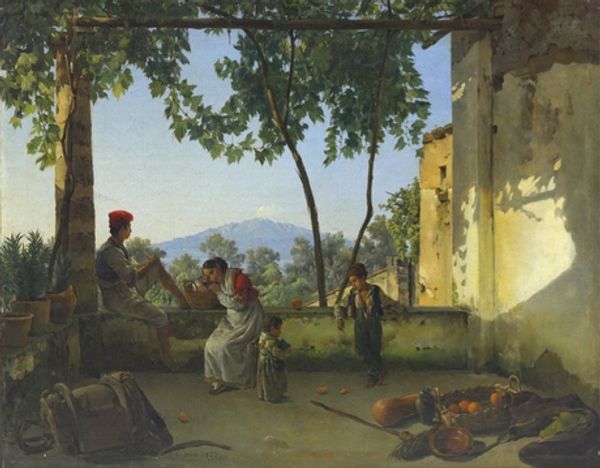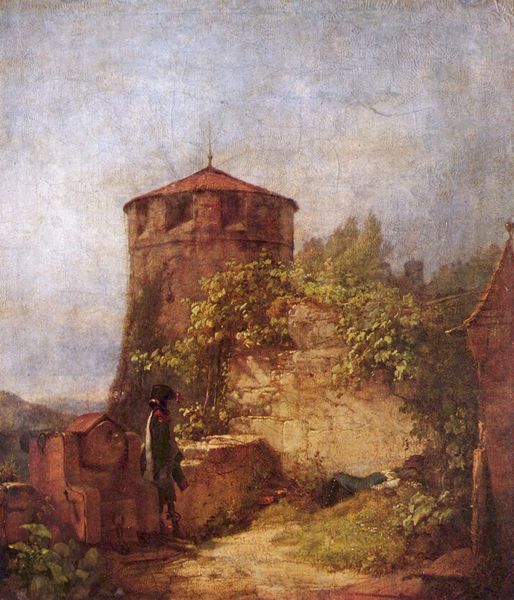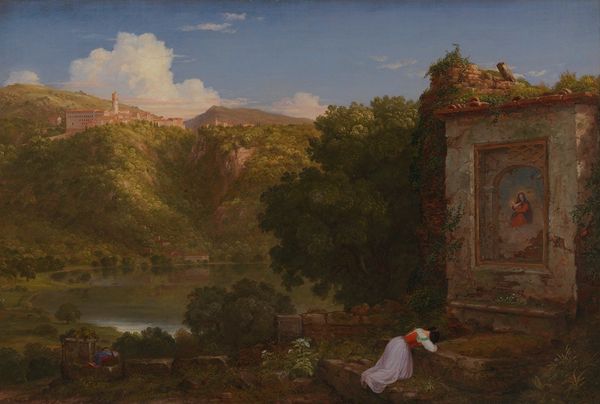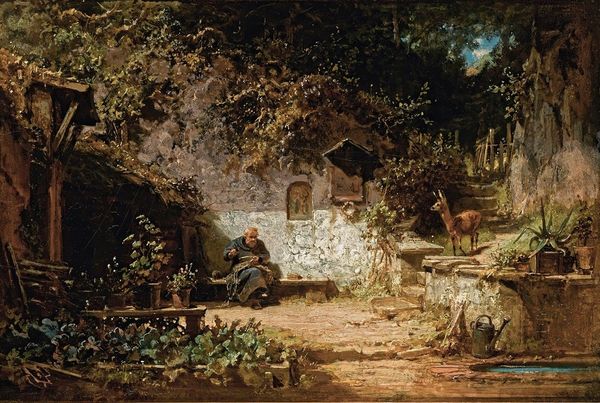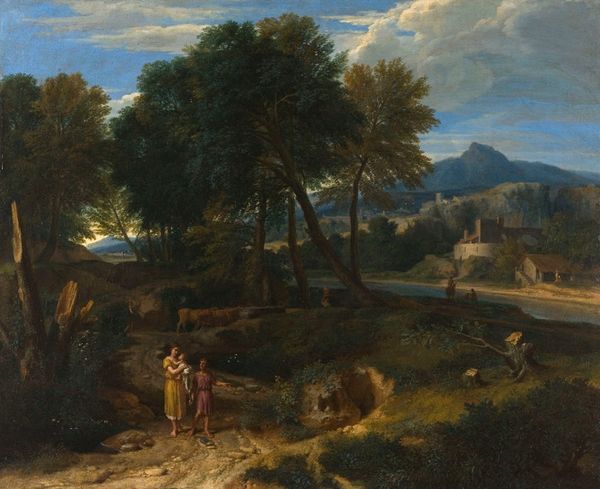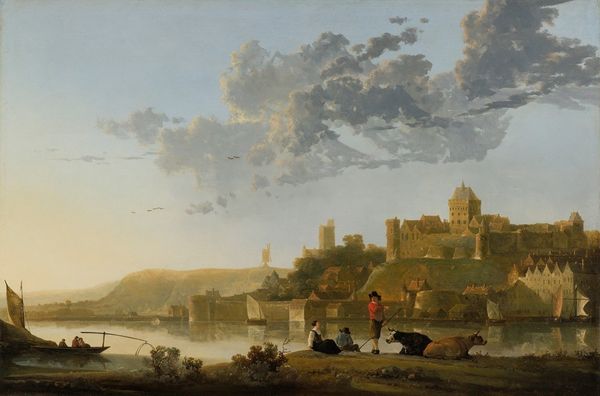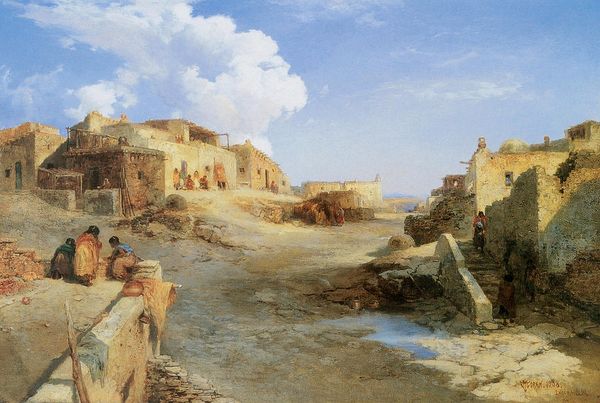
Copyright: Public Domain: Artvee
Curator: Take a look at Carl Spitzweg's "The Old Fortress Commandant," painted around 1860. It’s a charming oil-on-canvas that offers a glimpse into 19th-century genre painting. Editor: It’s odd, almost stage-like. There’s a stillness to it, despite the decaying fort and the slumbering dog. And the cracks on the painting itself almost feel like they’re part of the narrative of decline. Curator: Precisely! Spitzweg was a master of capturing quiet, anecdotal moments, often with a touch of gentle humor. The painting’s title, coupled with the cannon and fortification, alludes to power. But the commandant is having tea and seemingly lost in thought. It speaks to the romanticized views of power that were common during the Biedermeier era. Editor: That cannon practically screams about industrial processes; its dark red body must have been smelted at high temperatures. And juxtapose the military technology with what looks like hand-stitched upholstery on the commandant's chair and the neatly set tea table…it’s a scene full of such subtle contrasts. Curator: These contrasts were key to how people perceived shifts in class structure. Industrialisation changed power dynamics and threatened traditional crafts, and by rendering this scene so lovingly, he elevates it. He comments, perhaps subtly, on what may soon be lost to modernity. The setting itself is meticulously depicted, showing the rise in tourism around historic ruins. Editor: I wonder about Spitzweg’s access to these materials, though. What kind of studio setup did he have to create such fine detail? Look at the layers and shades used on the fort in the background; the cost and time that oil layering entails suggests a certain level of economic freedom for the artist. Curator: Absolutely, Spitzweg’s privileged position gave him the means to critically engage with these social changes. This painting isn't just a depiction, it’s a commentary shaped by the social forces acting on him, too. Editor: It’s a reminder that even these serene, seemingly straightforward images carry so much evidence of the socio-economic underpinnings that allowed them to be made. Curator: Indeed, and hopefully our reflections offer a richer understanding of this fascinating work. Editor: Agreed. Looking beyond the surface unveils more intricate stories about 19th-century life than one might initially suspect.
Comments
No comments
Be the first to comment and join the conversation on the ultimate creative platform.
